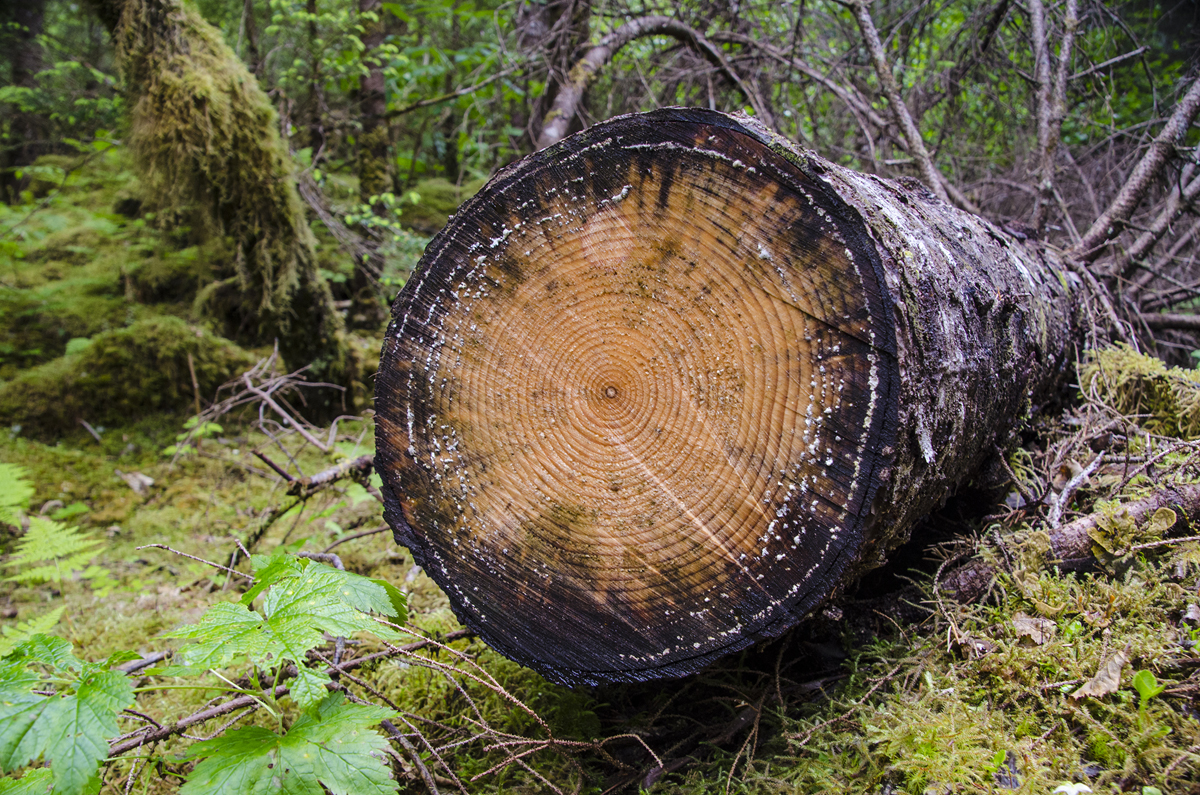Alaskans are running out of time to give their input on the U.S. Forest Service’s plan to manage the Tongass National Forest into the 2030s.
Feb. 22 is the deadline for comments on a plan that would wean the Southeast logging industry from older, larger, and more ecologically valuable trees and switch it to the harvest of younger, smaller trees. The plan has been in the works for almost three years and is scheduled to be complete by December.
“I think this is the most complex project I’ve ever worked on,” forest planner Susan Howle told an audience of about 50 people Wednesday night at an open house in the Juneau Forest Service offices.
According to Forest Service documents, the agency has five options to pick from. Each differs in detail, but the overall goal is the same: Transition away from cutting old-growth forest and switch to young-growth trees.
“That was the direction that came down from the Secretary (of Agriculture),” Howle said, referring to a 2013 memo from Tom Vilsack.
That memo called the Tongass a “national treasure” that contains much of the remaining old-growth forest in the United States. Elsewhere, loggers pulled down all but a sliver of the forests that spread across the U.S. when European settlement began.
When it comes to timber, older trees tend to provide denser wood with fewer knots and defects. That makes it valuable to those who build with wood. Older trees are also valued by those concerned with the environment: Stands of old-growth trees host species that can’t survive in other environments, and they tend to be linked with better salmon production in the streams that run through them. Aesthetically, old-growth forests are prized by tourists and hikers for their rarity and beauty.
As the timber industry has declined in Southeast Alaska — it now employs about as many people as it did in 1890, with a payroll of just $17.2 million — the interests of the tourism and fishing industries are beginning to take precedence over those of the logging industry.
“You don’t get the whole pie anymore; you have to share a piece,” said Kirk Hardcastle, one of 15 members of an advisory committee the Forest Service put together to advise it on the planning process.
In December, the committee — which included loggers, fishermen, landowners, businesspeople, government representatives and others — unanimously agreed to support a plan option that would allow 15 years for a transition from old growth to young growth. The plan protects some areas from logging entirely and cuts the annual harvest of all timber by almost five-sixths — from 267 million board-feet of timber to 46 million board-feet of timber per year.
The four other plan options allow more time for a transition, varying mixes of old and young trees, and different closed areas.
At the same time as it protects old-growth forest, Howle said, the Forest Service has an obligation to provide “bridge timber” to allow the industry time to adapt to a new way of doing things. That means old-growth harvests would continue to a diminishing degree during the transition period, and even after the transition, about 5 million board-feet of old-growth timber would still be harvested.
The Forest Service would also allow timber cutting closer to beaches and rivers to compensate for the closed areas. “We have to look at areas where … we don’t normally go,” Howle said.
That compromise has made environmental groups unhappy. According to a register hosted by the Forest Service, 9,127 comments had been submitted through midday Wednesday. The vast majority were form letters submitted by Outside residents. Not all were, however.
On Monday night, the Southeast Alaska Conservation Council hosted an open meeting of its own at McPhetres Hall in downtown Juneau.
Community organizer Seth Ballhorn, showed a video highlighting the social importance of the Tongass, then led an audience of about 25 people through a lesson in how to submit effective comments.
SEACC attorney Buck Lindekugel, who has extensively studied the Tongass plan, said SEACC isn’t completely against cutting old-growth timber; it simply wants it done in proportion to the rest of the economy.
“There’s a mythology that timber’s king still in the Tongass,” Lindekugel said.
Because tourism and fishing benefit from having old-growth forests and employ more people (who make more money) in Southeast Alaska, SEACC is promoting the idea of a faster transition than any the Forest Service is suggesting. Rather than 15 years, some of those at SEACC’s meeting suggested, why not five?
“We’ve come a long ways, but there’s still a long way to go,” Lindekugel told the crowd.
HOW TO
To submit a comment or view the Forest Service proposals, visit http://www.fs.usda.gov/detail/tongass/landmanagement/?cid=stelprd3801708

